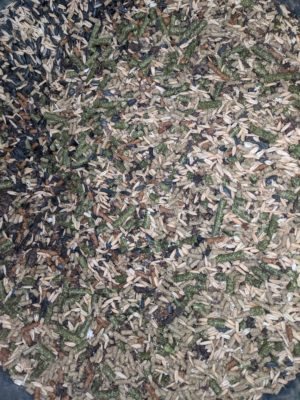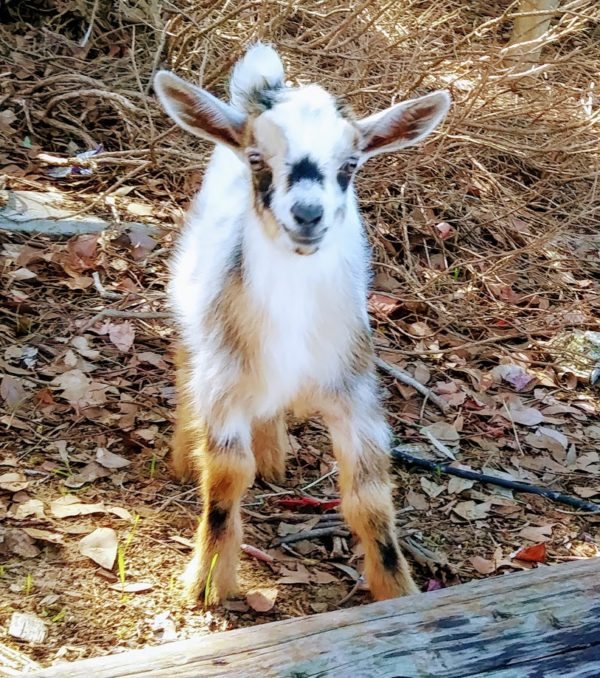People may get overwhelmed when they take their goats home – but if you have your goat pen ready, the rest it really is quite easy.
Your goat pen should include 4 things:
- Protection – from mountain lions and coyotes, your goat looks like a 4-legged snack, so keep them in a pen at night and/or have good motion lights.
- Water – There should always be water available and it should be clean
- Hay – have a bale of that hay matches their current feed. We mostly feed our goats a grass hay and alfalfa
- Baking Soda – A Goat’s stomach is a little brewery always fermenting. That is how they get protein from plants. Sometimes their stomach gets imbalanced and they need to supplement with Baking Soda. You should always have baking soda available for them to eat when needed.
Now that you have the basics the rest is just maintenance!
Feed
Feed forage, alfalfa, or grass hay. Grain is a snack, not a main feed. They need roughage for their rumen to stay healthy.
Always keep clean water – no algae in the water trough or water bucket
Supplements
Keep minerals out and free for them to eat. We prefer minerals that are exclusively for goats. ( It is not for sheep) or else some supplements will be missing.
We also keep baking soda next to their minerals. Baking soda is what goats eat to regulate the digestion in the first section of their 4 part stomach, called the rumen. It is basically a fermenter which is why you hear them gurgling and burping so much.
Sick Goats
What does a sick goat look like?
- Bloat – A goat who has an imbalanced digestive system will have their stomach fill with pressure, this is called bloat. A combination of forcefeeding them a baking soda solution with water and rubbing their left side can help. Many goats will self care before it gets this far as long as you leave our a bowl of baking soda t=for them to eat as needed.
- Scours – happens when they have a digestive sickness. Watch their poo:
- Healthy – pebble-like and not clumped together.
- Keep on Watch – If they have pebbles that are clumped together they may have an upset stomach from eating something they shouldn’t or by eating too much grain – On our farm this happens if they sneak too much chicken feed.
Needs treatment – runny, no pebbles at all. This means you have a sick goat and you should treat them with Corid.
Supplements and shots:
- Copper bolus – every 6 months
- BO-SE – selenium supplement
- CDT – annual shot
- Worming – every 6 months
Pest prevention (Big and small)
First keep stalls clean by keeping fresh bedding. Sprinkle lime powered on top of wet spots to neutralize goat pee. Also can spread diatomaceous earth to keep down mites.
Ticks, fleas, mites – varies based on type of pest. You can rub diatomaceous earth in their coat to kill bugs. Use chemicals, dips, and sprays as a last resort.
Grooming
Watch their hooves – hooves should be trimmed every two or three months.
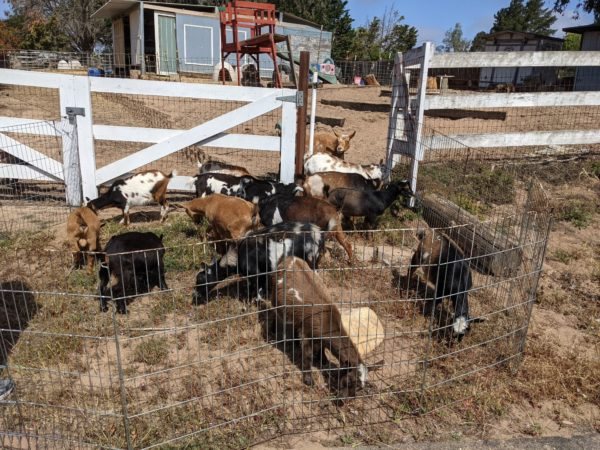

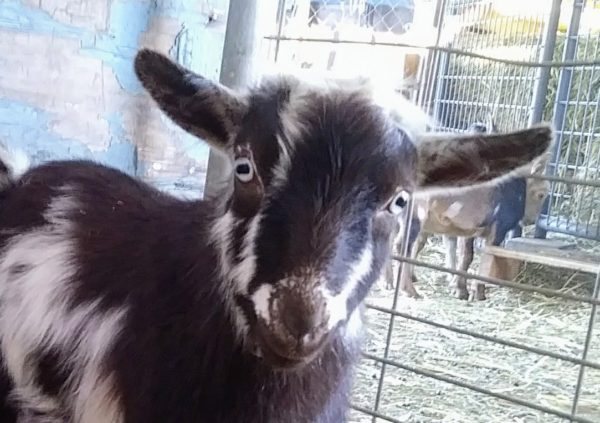
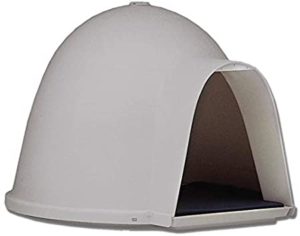 ts can live in a simple shelter such as a medium to large dog igloo to a goat condo! What is of imperative importance is that they are able to get out of the weather. There is a common saying among goat owners, “a wet goat is a dead goat.” That being said, goats absolutely hate getting wet! Whatever shelter you choose to buy/build it will need to be mucked out weekly or sooner. When waste matter is left behind (especially if there is no air circulation) ammonia fumes build up and linger at the bottom of the enclosure. The build up and constant inhalation of these fumes can/will irritate the goats lungs and they can develop pneumonia. Pneumonia in goats more times than not results in the death of the goat.
ts can live in a simple shelter such as a medium to large dog igloo to a goat condo! What is of imperative importance is that they are able to get out of the weather. There is a common saying among goat owners, “a wet goat is a dead goat.” That being said, goats absolutely hate getting wet! Whatever shelter you choose to buy/build it will need to be mucked out weekly or sooner. When waste matter is left behind (especially if there is no air circulation) ammonia fumes build up and linger at the bottom of the enclosure. The build up and constant inhalation of these fumes can/will irritate the goats lungs and they can develop pneumonia. Pneumonia in goats more times than not results in the death of the goat.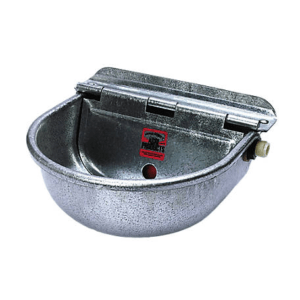 Make sure you have a freshwater delivery system as well. So as you prepare your farm now is the perfect time to run some PVC and setup a livestock waterer.
Make sure you have a freshwater delivery system as well. So as you prepare your farm now is the perfect time to run some PVC and setup a livestock waterer. We recommend a bowl type that mounts to a fence and includes a float and if you have high water pressure (above 50 PSI) use interactive watering devices like a paddle water bowl that requires your goat to push on a level with their nose. Put these waterers high enough so they cannot poop in them. Also be prepared to use a cinderblock so your bucklings and doelings can reach the water until they grow taller.
We recommend a bowl type that mounts to a fence and includes a float and if you have high water pressure (above 50 PSI) use interactive watering devices like a paddle water bowl that requires your goat to push on a level with their nose. Put these waterers high enough so they cannot poop in them. Also be prepared to use a cinderblock so your bucklings and doelings can reach the water until they grow taller.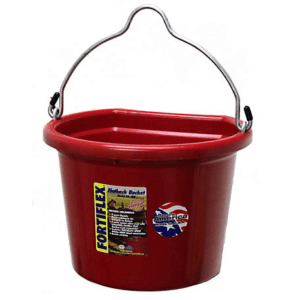
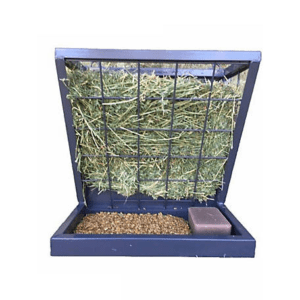 feeding grain, but if you have many goats I would consider a trough that mounts to the fence. Goats are messy with their hay so use a large trough or a hay feeder.
feeding grain, but if you have many goats I would consider a trough that mounts to the fence. Goats are messy with their hay so use a large trough or a hay feeder. 
